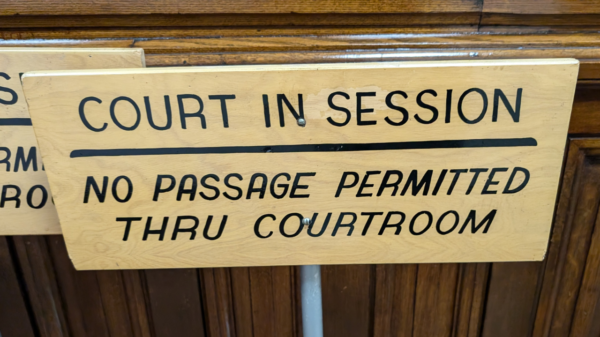Thunderstorms are a common occurrence, and while they can be awe-inspiring, they also pose significant risks, particularly from lightning. Knowing how to stay safe during a thunderstorm is essential for your well-being. This article provides essential safety tips for thunderstorms, focusing on lightning risks and protection measures for various situations.
Lightning Safety Tips
Understanding Lightning Risk
Lightning is a powerful electrical discharge that occurs during thunderstorms, posing a threat to people, animals, and structures. It is crucial to understand the risks associated with lightning and take necessary precautions to ensure your safety.
Safety Tips Before a Thunderstorm
Check the Weather Forecast
Stay informed about the weather by checking forecasts regularly, especially when planning outdoor activities. This can help you make informed decisions and take appropriate safety measures if a thunderstorm is imminent.
Plan Indoor Activities
If a thunderstorm is predicted, it is wise to plan indoor activities to minimize your exposure to lightning risks. Reschedule or postpone outdoor events to prioritize safety.
Safety Tips During a Thunderstorm
Seek Shelter Indoors
If you find yourself caught in a thunderstorm, seek shelter immediately in a building or an enclosed vehicle. Avoid open spaces, tents, or small shelters that do not provide sufficient protection from lightning.
Avoid Tall Objects and Open Spaces
Lightning tends to strike the tallest objects in an area. Keep away from trees, flagpoles, and other tall structures that might attract lightning. Additionally, avoid open spaces, such as fields or golf courses, where you may be the tallest object.
Stay Away from Water and Conductive Materials
Water and metal objects are excellent conductors of electricity. During a thunderstorm, avoid swimming, bathing, or using metal objects like umbrellas, golf clubs, and bicycles, as they can attract lightning.
Safety Tips After a Thunderstorm
Wait for the Storm to Pass
Remain in a safe shelter for at least 30 minutes after the last sound of thunder or the last lightning flash. This ensures that the storm has moved away and the risk of being struck by lightning has diminished.
Check for Damaged Structures and Power Lines
After the storm, inspect your property for any damages caused by lightning or fallen trees. Keep a safe distance from downed power lines and report them to your local utility company.
Safety Tips for Specific Situations
Safety Tips for Your Home
Surge Protection
Install surge protectors for your electronic devices and appliances to prevent damages caused by lightning-induced power surges.
Secure Outdoor Items
Ensure that outdoor furniture, trash cans, and other items are secured to prevent them from being blown away or damaged during a thunderstorm.
Safety Tips for Outdoor Activities
Hiking and Camping Safety
Check the weather forecast before heading out for a hike or camping trip. If a thunderstorm is expected, consider postponing your trip or finding a safe shelter at the first sign of an approaching storm.
Water Activities and Boating Safety
Be aware of the weather forecast when planning water activities. If a thunderstorm is approaching, return to shore immediately and seek shelter on land.
Safety Tips for Drivers
Pull Over and Stay in Your Vehicle
If caught in a thunderstorm while driving, pull over to a safe spot, turn off your engine, and stay inside your vehicle until the storm has passed.
Turn on Hazard Lights and Avoid Flooded Areas
Use hazard lights to alert other drivers of your presence, and avoid driving through flooded areas, as water levels can rise quickly during a thunderstorm.
Thunderstorm Safety Tips for Pets
Keep Pets Indoors
Bring your pets inside during a thunderstorm to protect them from lightning and other hazards.
Pet Anxiety and Comfort Measures
Thunderstorms can cause anxiety and fear in pets. Create a safe, quiet space for them to retreat to during the storm. Close windows and curtains, and consider using calming aids like pheromone diffusers, white noise machines, or anti-anxiety vests to help alleviate their stress.
FAQ Section
How do I know if a thunderstorm is approaching?
Signs of an approaching thunderstorm include darkening skies, increasing winds, distant thunder, and flashes of lightning. Keep an eye on weather forecasts and pay attention to local weather alerts to stay informed.
What is the 30/30 rule for lightning safety?
The 30/30 rule is a guideline for determining the distance of a lightning strike and the appropriate time to seek shelter. Count the seconds between seeing a lightning flash and hearing the thunder. If the time is less than 30 seconds, the lightning is close enough to pose a threat, and you should seek shelter immediately. After the storm, wait at least 30 minutes from the last thunder sound before venturing outside again.
How can I stay informed during a thunderstorm?
Staying informed during a thunderstorm is crucial for your safety. Tune in to a battery-powered or crank-powered weather radio, local news, or weather apps on your smartphone for updates on the storm’s progress and any related warnings or alerts.
What should I include in my emergency kit for thunderstorms?
An emergency kit for thunderstorms should include:
- Flashlights and extra batteries
- A battery-powered or crank-powered weather radio
- First aid kit
- Mobile phone charger or power bank
- Non-perishable food and water
- Essential medications
- Blankets and warm clothing
- Waterproof clothing and footwear
- Whistle or signal flare
By following these safety tips, you can be better prepared for thunderstorms and protect yourself, your loved ones, and your property from lightning and other storm-related hazards.
ALSO READ:
- 2 Week Food Supply List: Guide for Emergency Preparedness
- Flood Safety Tips: Precautions, Actions, and Recovery
Subscribe to Coal Region Canary
Get email updates from Coal Region Canary by becoming a subscriber today. Just enter your email address below to get started!Support Coal Region Canary
Like our reporting and want to support truly local news in Schuylkill County? Your small donations help. For as little as $5, your contribution will allow us to cover more news that directly affects you. Consider donating today by hitting the big yellow button below ...


































